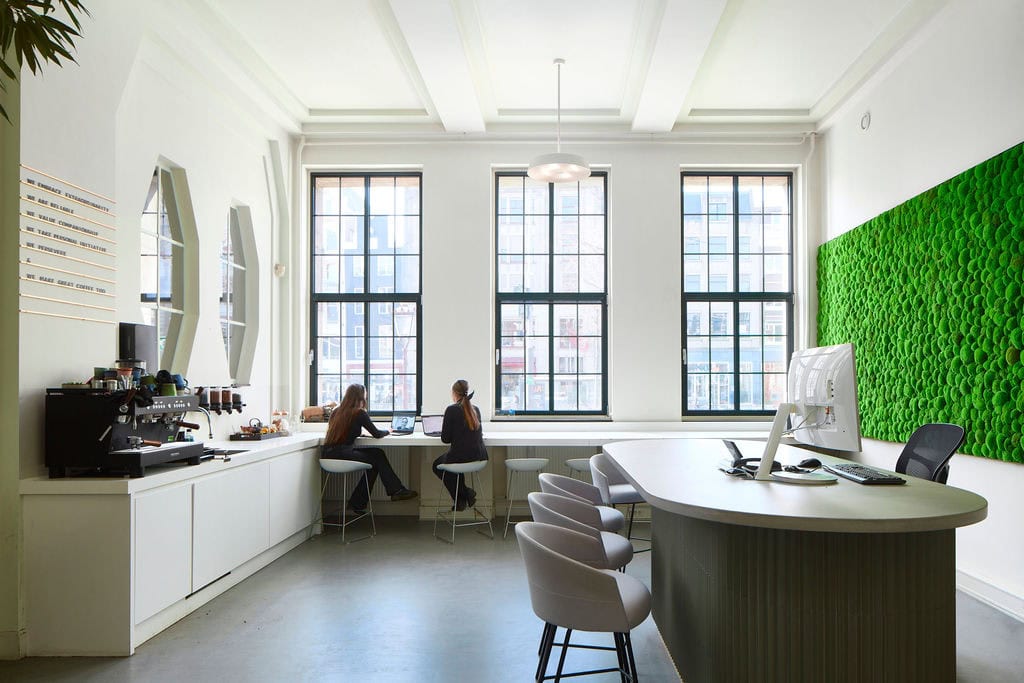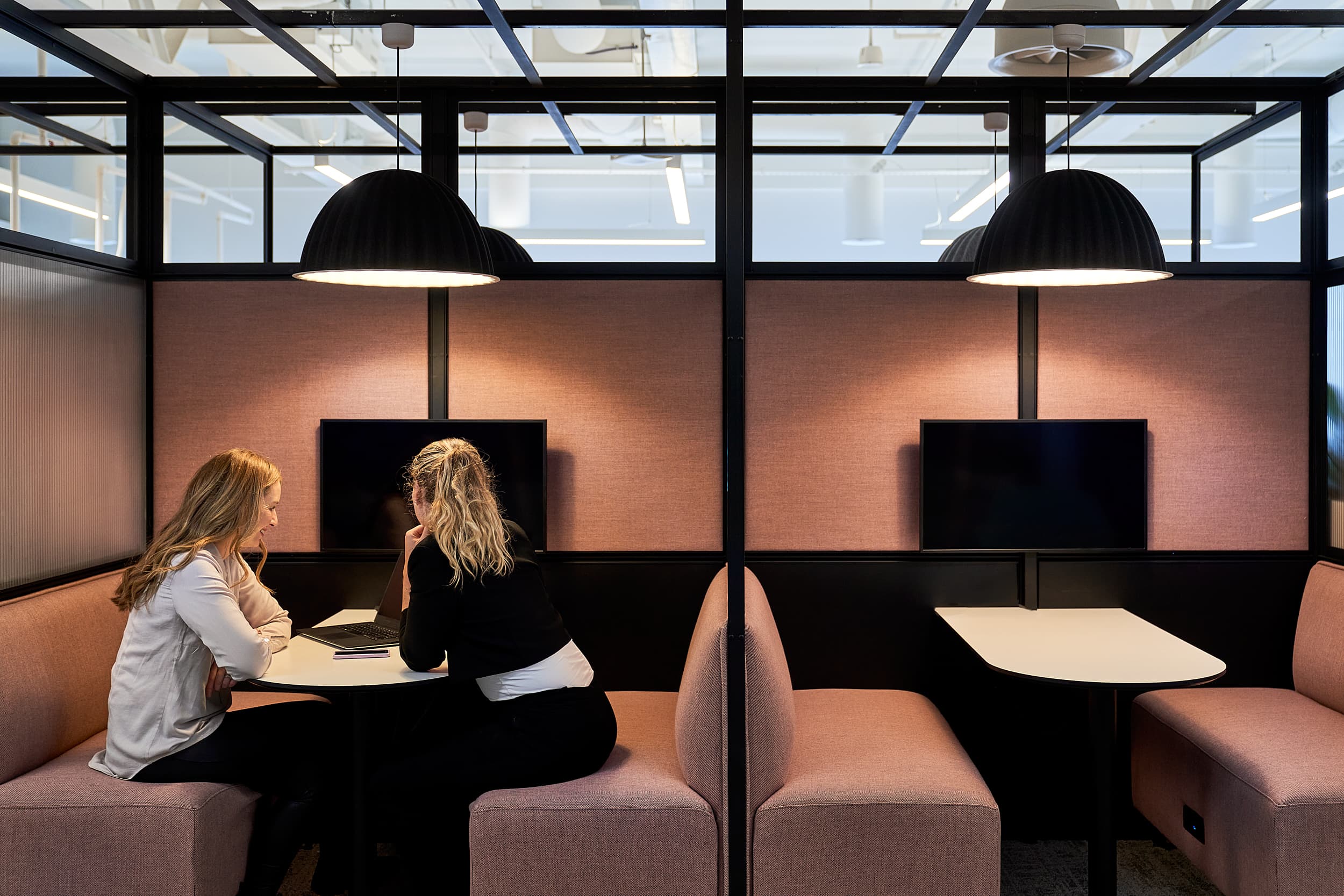Unveiling Dutch office design trends: harmonising work and well-being
Our Amsterdam studio leaders delve into the Dutch office design trends shaping the future of work in the Netherlands.

In the dynamic landscape of post-pandemic work culture, Dutch office design has emerged as a canvas of innovation, sustainability and with a genuine commitment to employee well-being.
Join us as workplace leaders from our Amsterdam studio take you on a tour of Dutch office design trends that are currently shaping the future of work in the Netherlands.
Agile workspaces: empowering productivity and collaboration
In the midst of a transformative shift in workspaces since the pandemic, the rise of agile workspaces takes center stage, empowering employees to shape their surroundings to suit the task at hand. This transformation fosters collaboration, creativity and focused work, all within a single setting.
These spaces often feature modular furniture, versatile layouts and technology integration, allowing employees to easily switch between individual tasks and collaborative projects. This adaptability enhances productivity as employees can choose the setting that best suits their undertaking, while the collaborative design encourages seamless interaction and idea-sharing among team members.
Simultaneously, hybrid work models have reshaped these spaces to seamlessly accommodate both in-office and remote work, facilitating enhanced communication and collaboration. This dynamic combination reflects a new era where flexibility and adaptability redefine the way we work.
Harmonising brand identity: creating authentic work environments
Harmonising brand identity withing the workplace has become increasingly significant in Dutch workplaces. Companies in the Netherlands understand the crucial role that the office environment plays in reflecting their unique culture, values and character. This goes beyond mere aesthetics; it’s about creating an authentic and cohesive atmosphere that resonates with both employees and visitors alike.
In practical terms, this trend involves carefully curating the physical space to embody the essence of the company. From the colour palette and decor choices to the overall layout and design elements, every aspect is intentionally aligned with the brand’s identity. This alignment creates a consistent and immersive experience for anyone entering the office, fostering a sense of connection to the company’s mission and values.
A prime example is our recent project for Ohpen in Amsterdam, where we brought to life a workspace embodying the Ophen brand ethos which involved balancing the equilibrium between work and life. Inspired by their culture of freedom and creativity, we designed a space integrating balance, colour and openness, creating a serene environment.

Zoned designs: tailoring spaces for diverse activities
The concept of zoned workspaces, has emerged as a fundamental aspect of Dutch office environments. This approach recognises that one-size-fits-all office layouts are not conducive to the multifaceted nature of modern work. Instead, Dutch companies are embracing a more nuanced strategy, creating specific zones within their offices that cater to various activities and the diverse needs of their employees.
Quiet zones, designed for focused work, provide a sanctuary where employees can immerse themselves in tasks without the distractions of a bustling environment. These areas often incorporate soundproofing elements, comfortable seating and minimal visual interruptions to foster an environment conducive to concentration.
Conversely, communal spaces are designated for activities that thrive on collaboration and interaction. These areas are crafted to encourage brainstorming sessions, team meetings, and spontaneous discussions. Flexible furniture arrangements, ample whiteboard surfaces, and comfortable seating contribute to a dynamic and engaging atmosphere that promotes creativity and teamwork.
Smart office technology integration
The seamless integration of technology stands out as a distinctive strength in Dutch office design shaping workspaces for the future. Dutch companies are at the forefront of leveraging smart technologies, such as IoT devices and advanced sensor systems, to revolutionise the functionality and efficiency of their office environments.
We are increasingly seeing smart technologies play a pivotal role in optimising resource utilisation within the office. For instance, IoT devices may be employed to monitor and manage energy consumption, lighting and climate control systems. This not only contributes to sustainability efforts but also ensures that the office operates in an energy-efficient manner.
Additionally we are seeing IoT enabling the deployment of sensors throughout office spaces, providing valuable data on employee movement, space utilisation and environmental conditions. This data can then be analysed to gain a deeper understanding of how the office is used, enabling companies to make informed decisions regarding layout adjustments, resource allocation and workspace enhancements.
Whether you’re considering agile workspaces, brand-aligned design, zoned layouts or smart technology integration, our Amsterdam team is ready to collaborate with you on your next workplace project. Contact a member of our Amsterdam team today.


